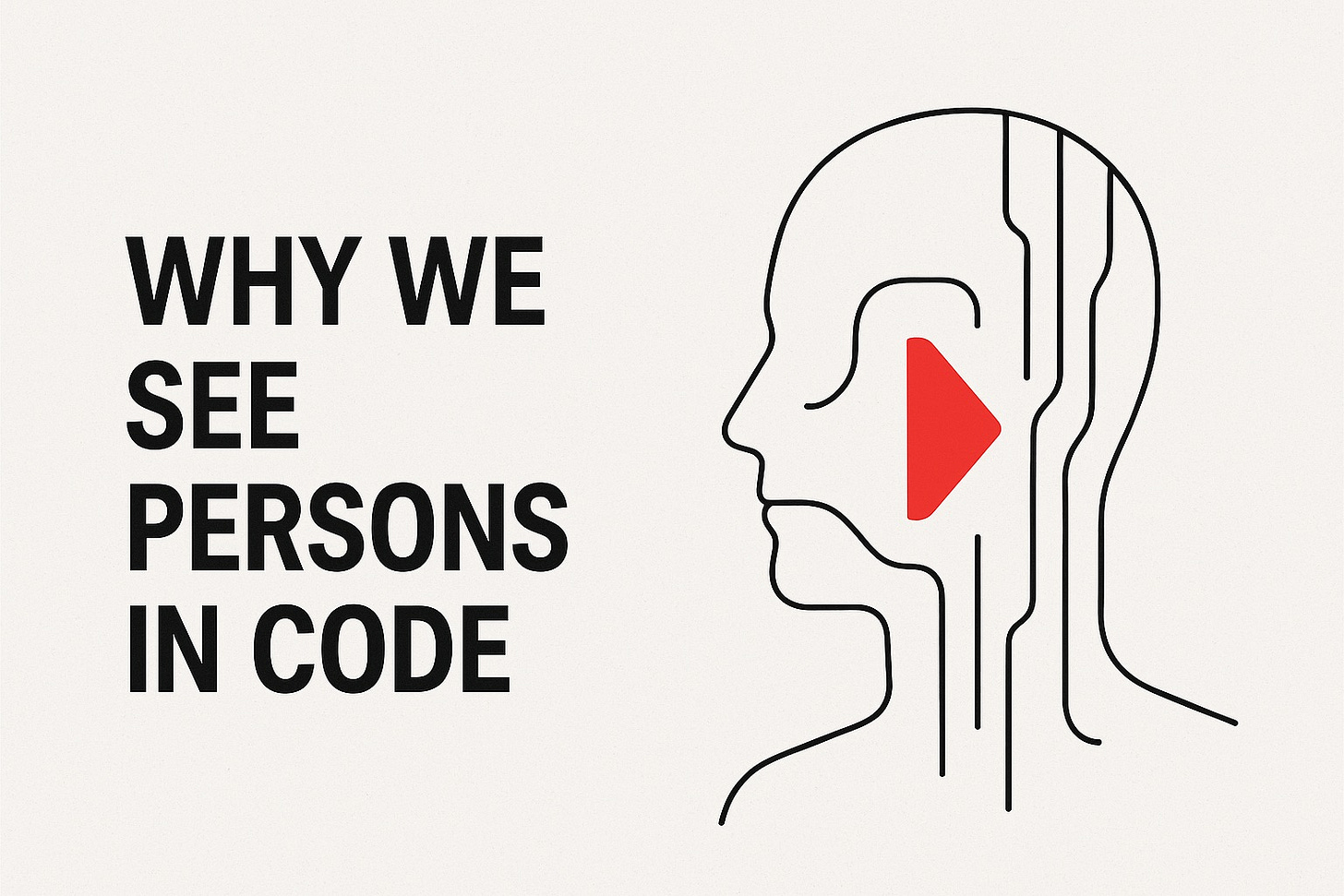Why We See Persons in Code
The Psychology of Anthropomorphism and How to Design With It
AI is starting to look and sound alive. A face, a voice, a memory. Our brains take the rest of the steps without asking permission.
This is why you thanked Siri.
Why you felt judged by a coding assistant.
Why you gave your automation a name.
Those slips aren’t random. They come from stable quirks in how humans see minds. And they matter because trust, compliance, and safety live inside these little moments.
The psychology behind it
Decades ago researchers showed that people treat media like people. The “Media Equation” and CASA studies proved that even basic cues trigger politeness, reciprocity, and flattery. We default to social rules.
Three forces explain why:
Cues within reach. If you see or hear something human-like, you respond.
Effectance. We want to predict and control the world. A “mind” makes it easier.
Sociality. We’re wired for connection. Any spark will do.
Later work showed how we perceive minds on two axes: agency (can it act?) and experience (can it feel?). The more “experience” we see, the more moral weight we assign. That is why a robot dog can earn sympathy while a chess engine does not.
Old demonstrations that still predict behavior
Heider–Simmel experiment. A triangle and a circle moving around a square. People watch and see heroes, villains, stories.
ELIZA. A stripped-down chatbot from the 1960s. Many users felt it understood them.
Pet robots. Tamagotchis, Sony’s Aibo, today’s companions. People attach, miss them when they’re gone, even grieve.
Give a machine a face, a voice, or a name and your brain will supply the rest.
Why AI supercharges it
Large language models amplify the effect because they throw off dense social cues at near-zero cost. Memory, conversational style, hedging, small talk, even pauses.
They do not really have theory of mind. Their performance collapses on small tweaks. But the signals are enough to trigger projection. A name, a profile picture, the way latency is smoothed—all are multipliers.
The risks
Anthropomorphism changes where people place blame. The “moral crumple zone” effect means humans and machines get assigned responsibility differently depending on how alive the system feels.
Adding human cues boosts compliance and stickiness. It also raises deception risk. Regulation is already catching up: laws now require clear disclosure when users are dealing with AI or synthetic media.
A playbook for design
Calibrate the persona. Warmth for motivation tasks. Competence for precision.
Disclose clearly. Say it’s AI, keep it persistent, make handoff to humans easy.
Constrain cues. Don’t over-humanize in domains where clarity matters most.
Instrument the funnel. Track not just engagement but trust, error recovery, and successful handoffs.
Examples worth testing
Persona A/B. Try an avatar and name vs. a neutral interface. Watch onboarding results.
Voice switch. Gendered to neutral. See what it does to trust.
ELIZA vs. GPT. Place transcripts side by side. What’s new, what’s unchanged.
Narrated shapes. An LLM adds a story to Heider–Simmel. Where does it go too far?
Companion withdrawal. What happens when users lose a pet-like device.
Principles for builders
Use social cues as affordances, not decoration.
Separate persuasion from misrepresentation.
Set an “anthro budget.” Define how far you let human-like signals go, depending on the use case.
Closing thought
Anthropomorphism is inevitable. You cannot stop users from projecting minds into code.
The companies that align their cues with reality will earn trust that compounds. The rest will leak it.


